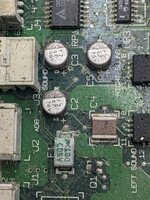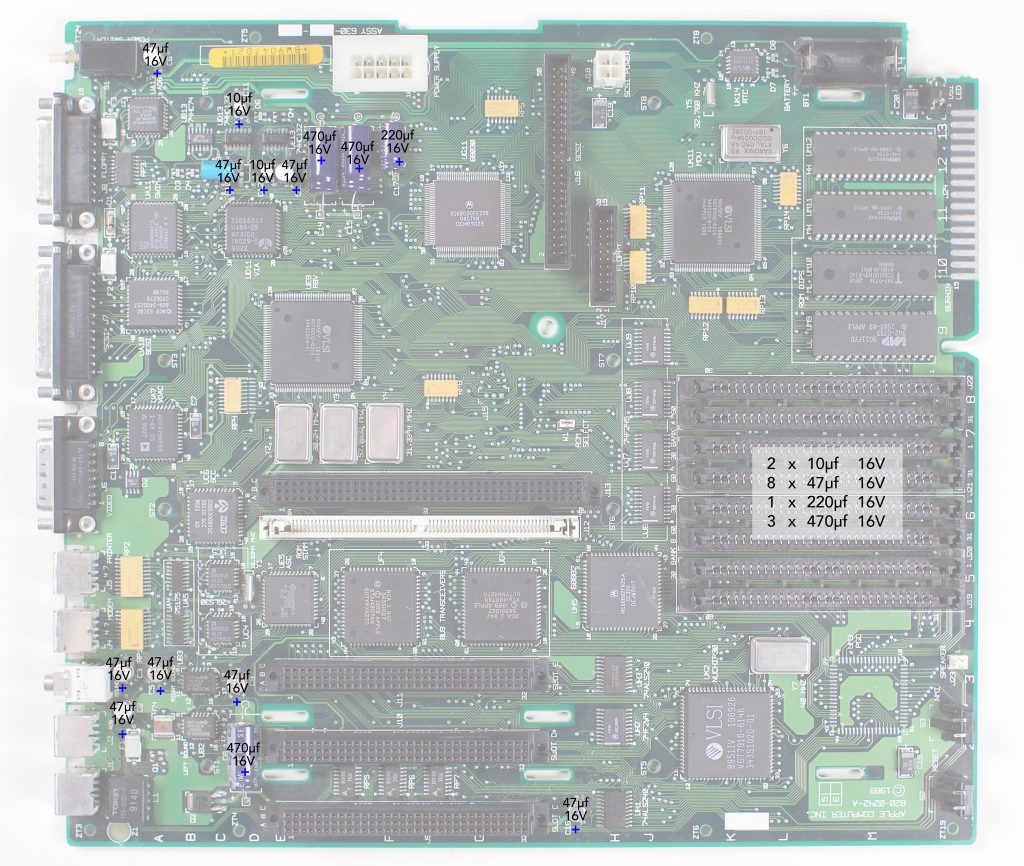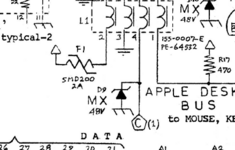TheBilgeRat
New member
Hello! First time poster. I recently picked up a nice clean IIci with the usual capacitor leaks. I am in the process of building a BOM for the capacitors and assessing the damage. The traces look pretty good so far, but the legs on a few components are pretty bad. What I'm looking for is a list of the passive components by location so I can order the correct parts.
Some images:

for example - what is this component at F1?

This SOT-23 at Q3 also looks pretty toast. It's a 1AMX but that doesn't come up with much at Mouser.
I did find the BOMARC(?) schematic for this board but it does not list the values of the passives.
Thanks again for any help!
Some images:

for example - what is this component at F1?

This SOT-23 at Q3 also looks pretty toast. It's a 1AMX but that doesn't come up with much at Mouser.
I did find the BOMARC(?) schematic for this board but it does not list the values of the passives.
Thanks again for any help!



